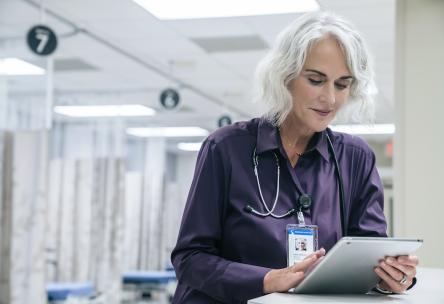Use this quickie guide to determine your best course of action

Your local emergency room is an incredible place, saving lives and handling crises all day and night. But with its notoriously long waits and high cost, if you don’t need to be there, it can also be a colossal waste of time and money. Studies show that as many as 27 percent of ER visits are avoidable.
The key question: Is your case a true emergency? Or should you instead head to your primary doctor? Here’s a quick guide to help you figure it out fast:
“Primary” Means “First”
Most primary care doctors create systems that allow them and their clinical staff to be available on short notice, even after hours. Some, like Mary Marshall, M.D., R.N., former president of the Michigan Academy of Family Physicians, offer an option in which after-hours callers can choose to go straight to the doctor’s cell phone.
“If you have something you’re worried about, then make that call [to your primary doctor],” she says. “We can help you determine what’s a serious sign, and help you avoid the expense and time of going to an ER.”
Deciding on your best care isn’t easy—so don’t try to decide alone. Your primary doctor can help you figure out what’s serious, Dr. Marshall says, as they have your health records and know you personally. That familiarity is especially important for older adults with long and complicated health histories.
“So many things could happen at this [later] stage in life, some common and some rare,” Dr. Marshall says. “If someone knows your medical history and your family history, you’ll get to that diagnosis much more quickly, and you’ll be treated more appropriately.”
If you haven’t established a relationship with your primary care doctor, now’s the time. Schedule a wellness visit and discuss availability, says family physician Robert J. Jackson, M.D., whose practice can often see patients the same day they call, or by the next day. He, too, says he is available after hours as needed.
If It Just Can’t Wait
If your primary care doctor isn’t available quickly enough, there are many other options:
- Many health plans have 24-hour nurse lines that connect you with registered nurses who can discuss at-home treatments for mild illnesses and injuries at no cost.
- Retail health clinics are a convenient option for quick in-person evaluations and treatment of mild symptoms.
- Many health plans provide smartphone, tablet, and computer access to board-certified doctors and therapists. You can also often get an online prescription, if you need it.
- Urgent care clinics offer hands-on examinations and treatment of moderate symptoms and mild injuries like sprains or cuts. The cost is typically more than a doctor’s office but less than an emergency room, and there’s usually a shorter wait time.
The emergency room should be reserved for potentially life-threatening conditions. Symptoms that could necessitate a trip to the ER include chest pain, a sudden blurring or loss of vision, signs of poisoning, a loss of consciousness, or a severe injury.
The National Institutes of Health has developed a comprehensive list of symptoms that would warrant calling 911 or going to an emergency room. Examples include serious crises such as severe burns, a neck or spine injury, breathing difficulties, a severe headache, heavy bleeding, a persistently high fever, or suicidal thoughts.